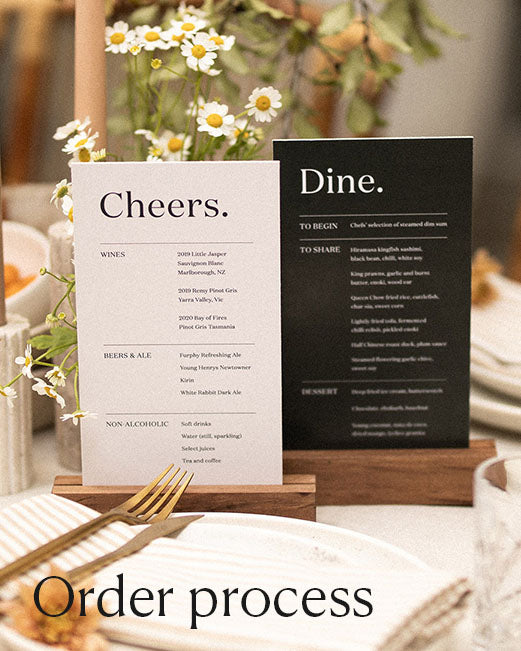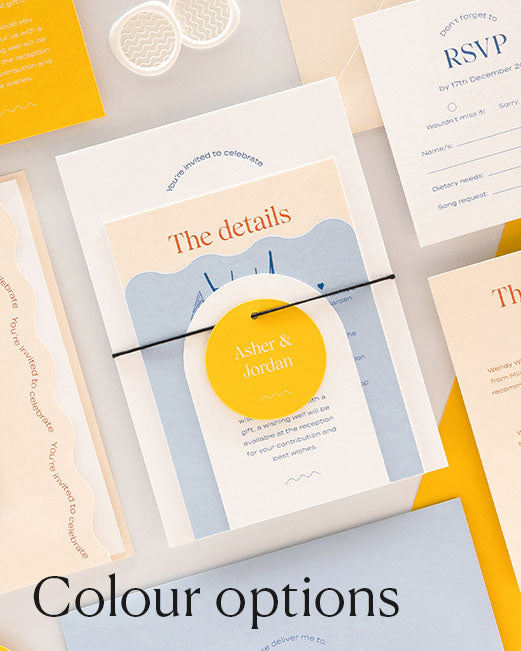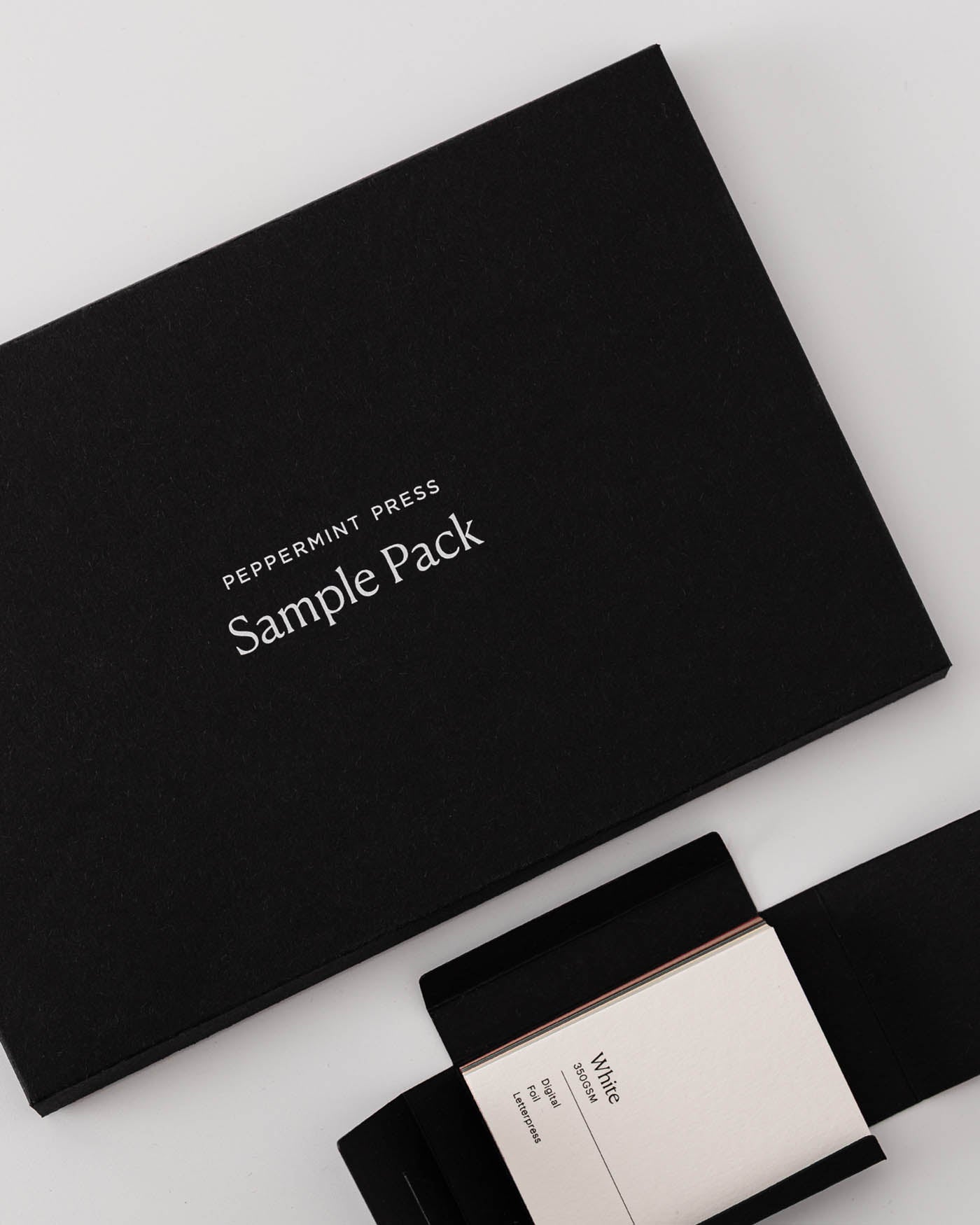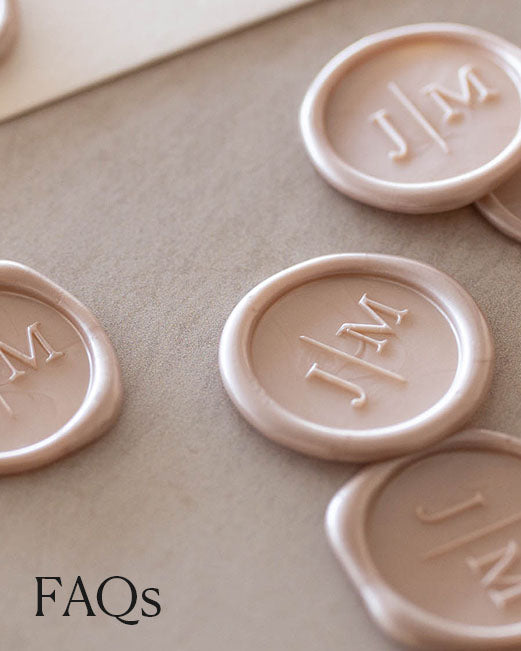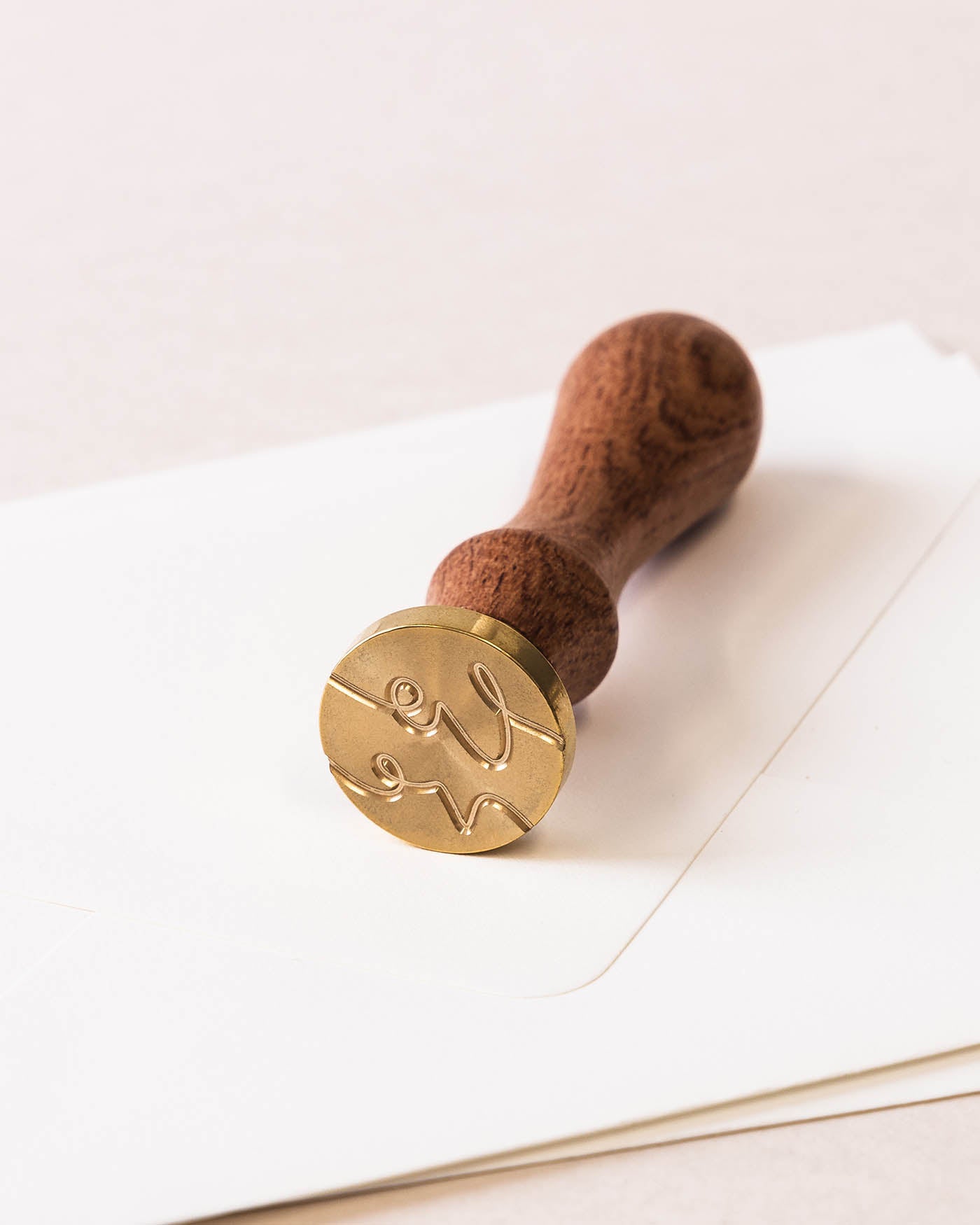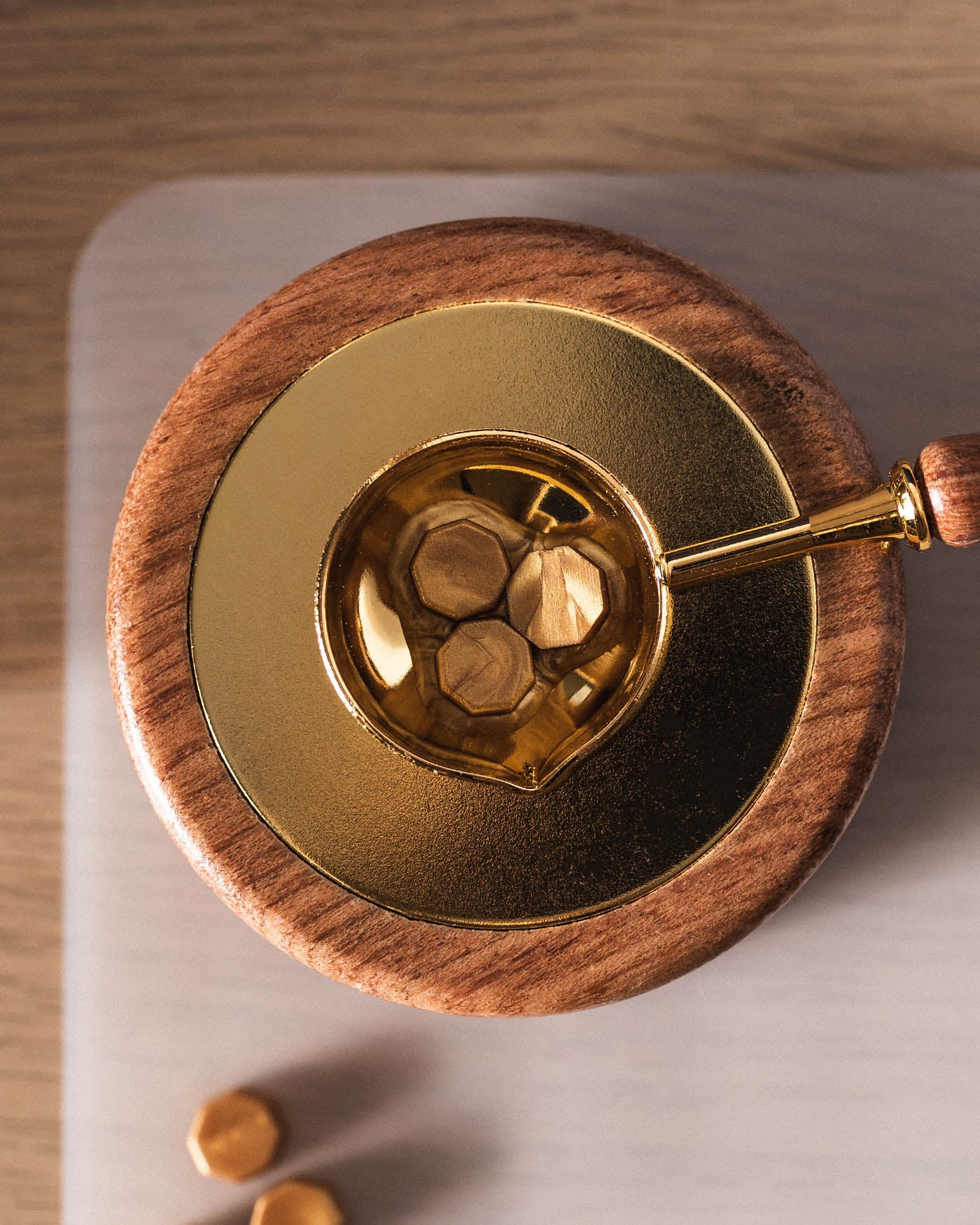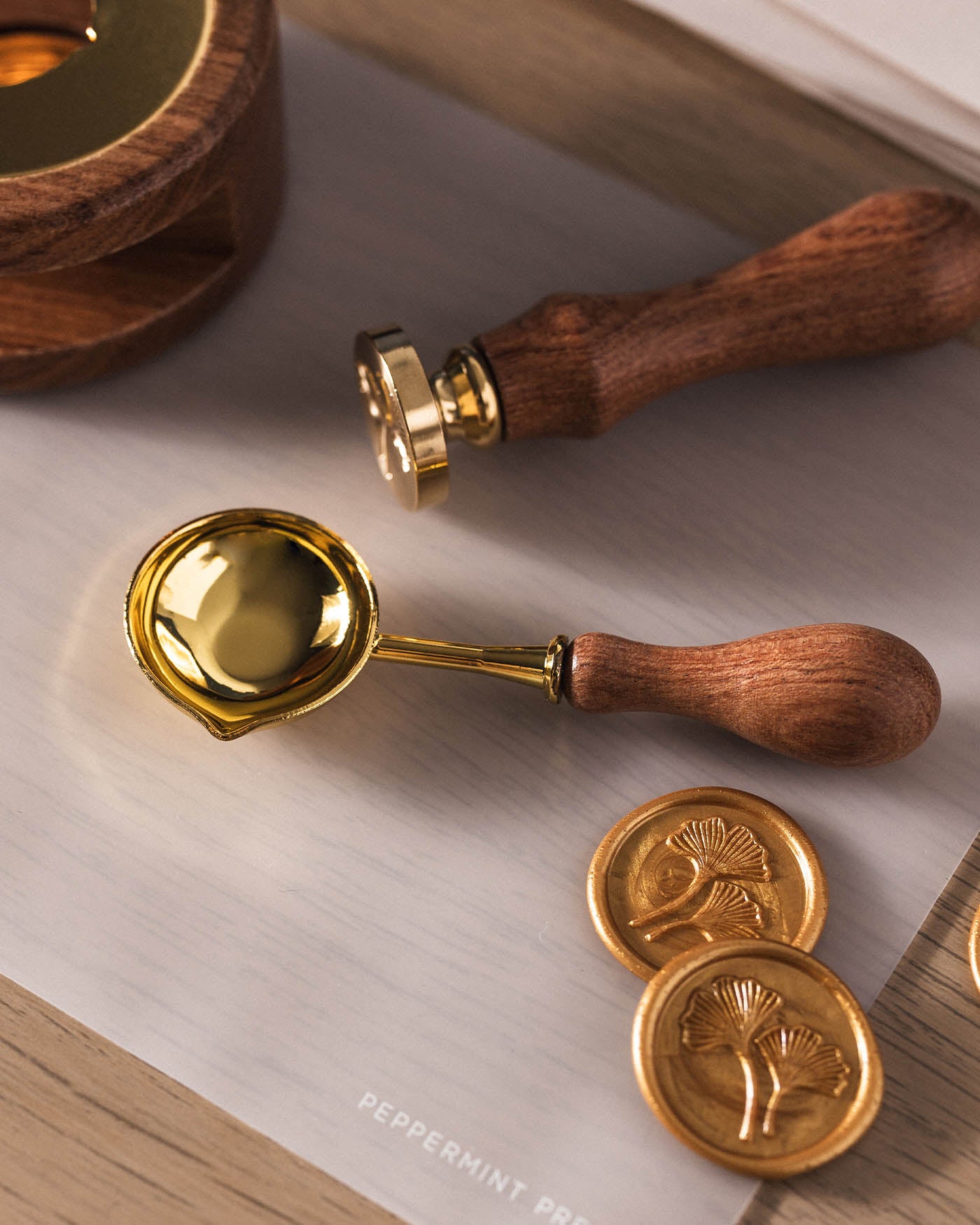The multiple printing options you'll stumble upon when formulating the perfect wedding stationery can be overwhelming to say the least. One of these methods is digital printing; a simple printing technique with a modern finish, which uses digital technology to transfer an image or design directly onto card. In this article, we talk about both the digital printing and white ink printing processes and help you decide when each can be a good choice for your wedding stationery or invitations. Plus, we'll also help you understand what makes digital printing different from other methods such as letterpress and foil press.
What is digital printing?
You may have seen the term ‘digital printing' when searching for your invitation suite or on the day items, but what does it actually mean? And how might it be different to other printing techniques? How will it actually affect your finished pieces?
In the world of wedding stationery, digital printing is a popular printing method - used to present some of the most important words you'll ever write - to your special guests. The printing technique uses digital technology to transfer an image or design directly onto card, or other substrates. It is commonly used in wedding invitations, save the dates, order of service, and many other wedding-related stationery pieces.
How does digital printing work?
In many ways, digital printing is a process similar to your printer at home, but at a much higher quality than your typical (and often problematic) desktop machine. Using inkjet or laser technology to print the design onto the material, digital printing is a wonderful way of making crisp clear lines and a high quality feel.
The digital printing process creates thousands of dots on the page in the colours cyan, magenta, yellow, and key (black) (commonly referred to as CMYK). With all of these dots layered and arranged on top of one another, a printed design comes to life on the page in a very short time.

What are the benefits of digital printing for my wedding invitations or stationery?
Although there are a number of different printing methods to choose from when it comes to perfecting your stationery, digital printing certainly offers a lot of benefits that lots of Peppermint Press customers enjoy.
Photography and personalisation
One of the biggest benefits of digital printing is that with four base colours (CMYK) available, it allows for full colour imagery (such as photographs and more complex illustrations) to be produced. So as you're browsing our website and you come across beautifully crisp photographs printed onto paper, you'll know that this is a result of the high quality digital printing method we use. You'll often see these examples on our gorgeous personalised wedding thank you cards.
Detail and clear text
Digital printing produces high-quality results on a wide range of paper stocks and materials. And thanks to its masterful attention to detail, it can also accommodate intricate designs and fine details, such as elegant calligraphy. Digital printing also produces sharp, clear text, which is particularly beneficial for your wedding invitations.
Cost-effective
Although digital printing looks beautiful on your wedding stationery, it is a more cost-effective option when to compared to other options such as letterpress and foil press. Ultimately, the digital process is less time consuming and less expensive, meaning that if you're working within a budget it might be a great option. But that doesn't mean that you shouldn't choose digital printing. Some clients - despite having a budget for a more expensive method - love the modern, sleek feel that is achieved with digital printing. Refer to the image above for an example of this.
Faster turnaround
Another great benefit of digital printing is its faster turn around time when compared to other printing methods. Digital printing is therefore a more suitable option for couples who have a tight timeline for their wedding preparations. Please note that you should still ensure that you don't leave your stationery order until the last minute!

What are the alternatives to digital printing?
At Peppermint Press, digital printing is only one option out of three printing methods we offer. Those customers looking for a more premium option, or a heightened sense of luxury or tradition in their wedding stationery, can choose either letterpress or foil press.
Learn more about these alternative printing methods here.
Digital printing and white ink printing- what's the difference?
As we have already learned, digital printing uses the CMYK dot process to print our timeless designs onto your chosen card colour. This process relies on the colour of the card to provide a clear background for the ink, so therefore on a darker card colour such as black, it would make sense that the dots would not be visible once printed.
White ink printing solves this process by using a special formula and ink that appears white and opaque on card stock. This method is more sophisticated than regular digital printing, but allows for beautiful crisp text, calligraphy or illustrations on dark card colours that previously were not available in the affordable price point associated with digital printing.

Typically, you will find many printers charge extra for this method, but at Peppermint Press, we want to make the process of choosing your collection and colour theme as enjoyable and easy as possible. To do this, we have combined digital and white ink printing together at the same price point to allow you to choose the card and colours that will suit your event without worrying about being charged extra before you go to print.
Let’s create beautiful stationery together
Using digital printing and white ink printing, we have been able to create some truly stunning collections that will suit your wedding across a cohesive range of options from invitation suites to coasters and signage.
We encourage you to order a sample pack to see and feel the quality of our work in person.

